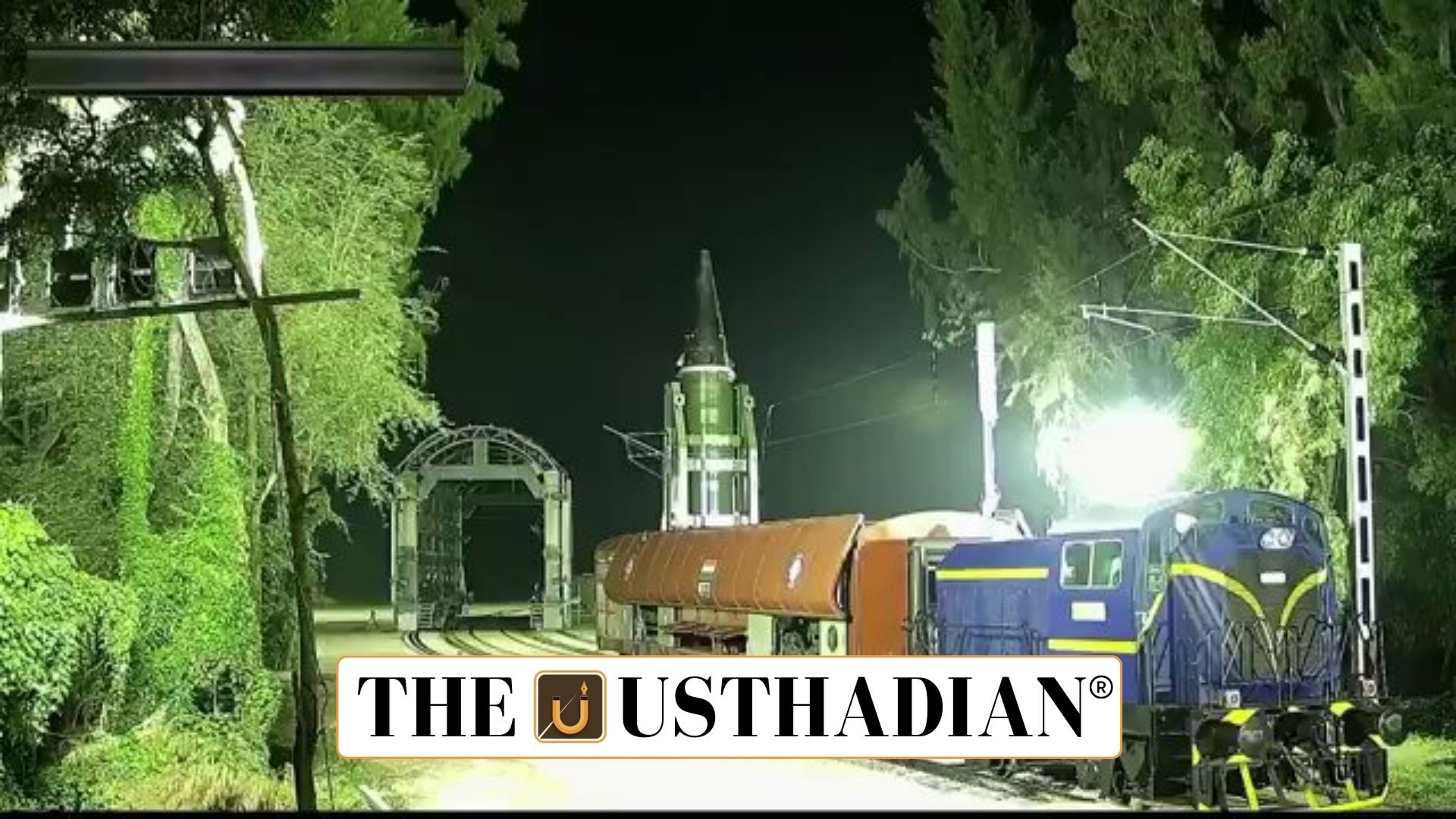Breakthrough in missile capability
India achieves milestone with Agni Prime rail launch: India has successfully tested the Agni Prime missile from a rail-based launcher, marking a major step in strengthening mobile defense systems. With this achievement, India joins an elite group of countries like the United States, China, and Russia that possess the ability to deploy ballistic missiles from rail platforms.
This test demonstrates both technological advancement and strategic depth, directly improving India’s nuclear deterrence posture and operational readiness.
Static GK fact: The first missile in the Agni series, Agni-I, was tested in 1989 with a range of 700 km.
Features of Agni Prime
Agni Prime, also called Agni-P, is the sixth missile in the Agni series developed by DRDO. It has a range of up to 2,000 km and uses a two-stage solid propellant system.
The missile is canisterised, ensuring quick launch and secure handling. Earlier versions validated road mobility, while this test established rail-based mobility, adding a new dimension to flexibility.
Static GK Tip: DRDO was established in 1958 and operates under the Ministry of Defence.
Advanced systems on board
The missile integrates autonomous communication systems, independent launch mechanisms, and protective safeguards. Ground stations confirmed the trajectory met all objectives, showcasing reliability under real-world conditions.
The Defence Ministry highlighted that the system is fully autonomous, allowing rapid deployment and stealth movement across the country’s vast railway network.
Joint execution of the test
The test was jointly carried out by DRDO and the Strategic Forces Command (SFC). The launch site remains undisclosed for security reasons.
Using a rail-mobile platform, the missile demonstrated cross-country operational readiness. The event validated India’s capacity to integrate military assets seamlessly with civil infrastructure.
Static GK fact: The Strategic Forces Command was created in 2003 to manage India’s nuclear arsenal.
Strategic importance
Rail launch capability adds strength to India’s nuclear triad by enhancing second-strike ability. Unlike fixed silos, mobile platforms make detection and targeting by adversaries far more difficult.
The rail-based system reduces vulnerability, cuts down deployment time, and increases the reach of missile forces. This capability is a decisive factor in India’s evolving defense preparedness.
Key takeaways
- First rail-based launch of Agni Prime
- 2,000 km range with precision strike capability
- Enhances mobility and survivability of missile forces
- Strengthens India’s strategic deterrence posture
- Executed jointly by DRDO and SFC under operational settings
Static Usthadian Current Affairs Table
India achieves milestone with Agni Prime rail launch:
| Topic | Detail |
| Missile tested | Agni Prime (Agni-P) |
| Range | Up to 2,000 km |
| Propellant | Two-stage solid propellant |
| Launch type | Canisterised, rail-based mobility validated |
| Developed by | Defence Research and Development Organisation (DRDO) |
| Partner agency | Strategic Forces Command (SFC) |
| First rail launch | September 2025 |
| Strategic role | Strengthens second-strike capability |
| Nuclear triad link | Adds survivability to land-based deterrence |
| Comparable nations | USA, China, Russia |








